Dialogue with the urban context for new energy: the Borgo Panigale cogeneration plant
Focus
Focus
Category Facet
Custom Facet
Search Results
-
Web Content Article · written-by ELENA FARRE on-date Jan 18, 2024 3:06 PM
We are certified Top Employer for the 15th year in a row, ranking among the top three Italian companies, standing out for employment policies. Awarded by the Dutch Top Employers Institute, a global...
-
Web Content Article · written-by LUCIA ALGISI on-date Jan 18, 2024 12:19 PM
2024-01-18 The company reaffirms, once again in 2024, its position among the best performers in human resources management, thanks to substantial investments in welfare, training, and skill...
Comunicati stampa: Hera Spa Other press releases -
Web Content Article · written-by LUCIA ALGISI on-date Jan 11, 2024 5:07 PM
SI Tweets by Hera Group NO No Sinistra
-
Web Content Article · written-by LUCIA ALGISI on-date Jan 9, 2024 10:29 AM
2024-01-02 A further confirmation of the importance of Hera’s achievements in terms of gender equality and inclusion The Group has obtained the “Gender equality certification” for its 11 largest...
Comunicati stampa: Hera Spa Other press releases -
Web Content Article · written-by LUCIA ALGISI on-date Dec 19, 2023 6:54 PM
The meeting of the BoD to approve the Business Plan 2023-2027 will be held on January 24, 2024. The BoD will meet in Hera’s headquarters located in Viale Berti Pichat 2/4 in Bologna. A press...
Tipologia Evento: Price sensitive -
Web Content Article · written-by LUCIA ALGISI on-date Nov 29, 2023 2:30 PM
Early warning system with innovative FingerPrint technology to ensure safe water
Categoria Progetto: Water Project Innovation -
Web Content Article · written-by LUCIA ALGISI on-date Nov 29, 2023 12:21 PM
The pilot project involving the installation of Kamstrup meters was carried out in Conselice, near Ravenna, and yielded excellent results. The tests now continue in Modena, covering a larger area
Categoria Progetto: Water Project Innovation -
Web Content Article · written-by LUCIA ALGISI on-date Dec 5, 2023 4:50 PM
490 https://www.youtube.com/watch?v=DIYNOk5NRGQ 870
Tipologia Web Channel: Highlights -
Web Content Article · written-by LUCIA ALGISI on-date Nov 29, 2023 2:35 PM
Discover the project for “removing and capturing” microcontaminants with recycled materials
Categoria Progetto: Water Project Innovation -
Web Content Article · written-by LUCIA ALGISI on-date Nov 29, 2023 12:05 PM
Hera continues experimentation of the innovative, fast and low-cost contactless system that uses space technology to detect water leaks in the network more quickly and productively
cosmicrays Categoria Progetto: Water Project Innovation -
Web Content Article · written-by LUCIA ALGISI on-date Dec 12, 2023 3:59 PM
2023-12-12 With this agreement, Modena will become a European capital of renewable hydrogen. The goal is to contribute to Emilia-Romagna’s carbon neutrality in an area with a strong entrepreneurial...
Comunicati stampa: Hera Spa Other press releases -
Web Content Article · written-by LUCIA ALGISI on-date Dec 13, 2023 9:45 AM
490 https://www.youtube.com/watch?v=RHSPlzQOGQc 870
Tipologia Web Channel: Highlights -
Web Content Article · written-by THOMAS CECCONI on-date Dec 11, 2023 9:57 AM
for the fourth year in a row, we were included in the Dow Jones Sustainability Index, in both the global and European indices. The composition of the DJSI, the authoritative international stock...
-
Web Content Article · written-by LUCIA ALGISI on-date Dec 8, 2023 8:01 PM
2023-12-09 Group confirmed as one of the world’s sustainability leaders in both the Dow Jones Sustainability World Index and the Dow Jones Sustainability Europe Index, once again recognizing Hera’s...
Comunicati stampa: Hera Spa Other press releases -
Web Content Article · written-by LUCIA ALGISI on-date Dec 4, 2023 10:23 AM
null null null null null null null null null null null null null null null null null null null null null null null null null null null null null null null null null null null null null null null...
-
Web Content Article · written-by LUCIA ALGISI on-date Dec 4, 2023 10:08 AM
Concrete actions for the protection of a common resource Implementation of strategic infrastructure works Wastewater reuse Water management Leak reduction Stakeholder engagement <b>The preservation...
-
Web Content Article · written-by LUCIA ALGISI on-date Dec 4, 2023 9:54 AM
How the integrated water service works Infografica Desktop acqua Infografica che spiega come funziona il servizio idrico integrato Infografica Mobile acqua
-
Web Content Article · written-by LUCIA ALGISI on-date Dec 4, 2023 11:33 AM
2023-12-04 (drafted pursuant to article 85-bis, paragraph 4-bis, of Consob Regulation 11971 / 14 May 1999) Communication of the overall amount of voting rights Bologna, 4 December 2023 - The...
Comunicati stampa: Shareholders’ meeting Hera Spa -
Web Content Article · written-by LUCIA ALGISI on-date Nov 29, 2023 2:59 PM
Sinistra Immagine bolla Middle Card 1 - Cosmic rays The search for water leaks is now more efficient, thanks to cosmic rays We continue to experiment with <b>a technology that allows us to control...
-
Web Content Article · written-by LUCIA ALGISI on-date Nov 29, 2023 3:10 PM
Destra Immagine bolla Middle Card 4 - Removing and capturing “Removing and capturing”: we supply drinking water through the use of recycled materials The project involves the use of <b>recycled...
Asset Publisher
District heating is already in itself a "sustainable" and environment-friendly solution, because it can guarantee better performance than traditional domestic boilers. In addition, the plant located in Borgo Panigale ensures lower emissions into the environment, more reliability and greater availability of energy. The system can heat the equivalent of 8,000 residential units. Currently, the turbines can produce 35,000 MWh of energy per year, almost twice as much as in the past.
When going by the roundabout between Via Prati di Caprara and Via Vittorio Sabena in the Reno di Borgo Panigale neighbourhood in Bologna, it seems like you are passing next to a gigantic colourful radiator. It has the appearance of a modern work of art, but instead it is the Hera Group’s new cogeneration plant.
This plant has changed the face of the entire neighbourhood since it was inaugurated in October 2017. Its characteristic element is the elliptical structure covering the stack of the plant. It consists of 576 plates of colourful porcelain stoneware arranged on multiple overlapping rings that create a combination of colours and light with the nuances typical of the city of Bologna: brick red, ochre yellow, tuff yellow, dark brown and rust.
Hera’s undertaking for an efficient district heating system
The Cogen plant, which stands in Via Paolo Nanni Costa, is not only Hera’s jewel from the architectural viewpoint - perfectly integrated with the new urban context of the neighbourhood - but is also the Group’s pride and joy from the production viewpoint. Entirely designed and built by Heratech, the engineering essence of the Hera Group, the plant produces energy in cogeneration, meaning both electricity and hot water necessary for the district heating network. Built thanks to an investment topping Euro 17 million, the plant heats the equivalent of 8000 housing units and currently the turbines produce up to 35,000 Mwh of energy a year, almost double that of the past.
District heating is already in itself a “sustainable” and eco-friendly supply because it is able to guarantee greater efficiency than the traditional household boilers. What’s more is that the plant guarantees less atmospheric emissions, greater reliability and a higher availability of energy with 90% efficiency.
What does all of this mean in terms of benefits for the environment? It is like planting 25,000 new trees every year. Or stopping the flow of traffic of 8000 vehicles during the same period.
Technology, efficiency, reutilisation of the land
The use of advanced technology and energy efficiency are therefore the cornerstones of this work, in line with Hera’s mission for sustainable development. But that’s not all. The new Cogen district heating plant made a remarkable impact also in terms of land reutilisation. Built on the site of the thermoelectric plant in operation since the 1990s, the Cogen plant allowed the plant in Via Segantini to be shut down and today only one plant is able to cover the same requirement guaranteed by the two of the past. (is it advisable to say that?) Yes, I think so
This is an enormous goal that Hera has met, which sets upgrading existing facilities one of its primary objectives. If the percentage of land reutilisation was 77% in the Group Sustainability Report closed in 2019, the development of the network works and of plants presently in progress and included in the 2020-2023 Industrial Plan will allow 73% of reutilised land to be guaranteed. (data updated to 2019).
The undertaking of the Hera Group for energy efficiency
The Borgo Panigale Cogen plant is part of the 343 interventions forming the plans for improvement of Hera, Inrete, AcegasApsAmga and Marche Multiservizi at year-end 2019, and that will allow consumption to be cut by 13,740 Tep (-5.9% energy consumption compared to 2013), passing the target set for 2020 by -5%. (data updated to 2019).
The Bologna Cogen plant in figures:
- 8,000 housing units served
- 35,000 Mwh energy produced each year
- Euro 17 million invested
Search Bar
Tag Facet
Search Results
Asset Publisher

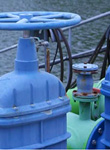
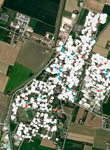
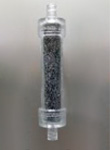
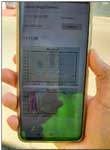
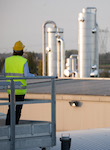
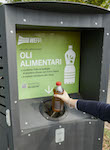

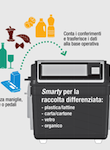


.jpg/468d051b-ba80-83a6-359d-7ef55eefd940)
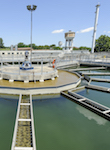
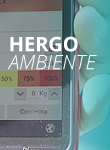
.jpeg/1d0e0770-1094-b22b-fce4-099f27c72978)